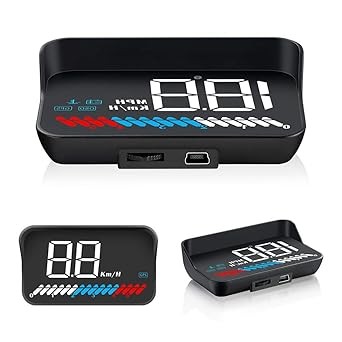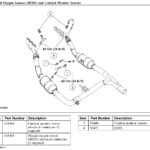Aftermarket OBDII HUD (Head-Up Display) units can seem like a fantastic way to modernize your car and get vital driving information directly in your line of sight. However, as a car repair expert, I’ve seen firsthand that the reality of these gadgets often doesn’t live up to the expectation. Based on user experiences and my own assessment, here’s a critical look at Aftermarket Obdii Hud Displays, especially those easily found online.
One common issue immediately arises with the design and installation. Some aftermarket OBDII HUD displays are simply not practical for most vehicles. The style that sits upright on your dashboard with a reflective screen, like the linked Rocboc model, often requires a near-vertical windshield to display correctly. Unless you drive a van or a similar vehicle with a very upright windshield, proper placement and viewing angle become almost impossible. This poor design severely limits their usability in standard cars.
 Aftermarket OBDII HUD Display Projecting Vehicle Speed onto Windshield
Aftermarket OBDII HUD Display Projecting Vehicle Speed onto Windshield
Even when you find a more adaptable design, such as HUDs that stick directly to the windshield, performance can be disappointing. A significant drawback is the refresh rate. Many of these budget aftermarket OBDII HUD displays, including popular models, only update their displayed information, like speed, once per second. This slow refresh rate renders them nearly useless for monitoring real-time speed changes unless you are driving at a constant speed using cruise control. Trying to use them for dynamic speed adjustments in normal driving is frustrating due to the lag.
Beyond performance, build quality is another major area of concern. The materials often feel cheap, and critical components can be poorly implemented. Take, for example, the ambient light sensor meant to automatically adjust screen brightness. In many units, this sensor is inadequately shielded from the HUD’s own LEDs. This flaw causes the sensor to constantly register bright light, forcing the display to maximum brightness even at night, becoming a distracting nuisance. Fixing this often requires dismantling the unit and physically shielding the sensor – a task most users shouldn’t have to undertake with a new product.
In conclusion, while the concept of aftermarket OBDII HUD displays is appealing, the current reality of many readily available units is underwhelming. From impractical designs and slow refresh rates to questionable build quality, these devices frequently fall short. TL;DR – don’t bother, they’re terrible. Spend your money on higher quality, more reliable car upgrades instead.

